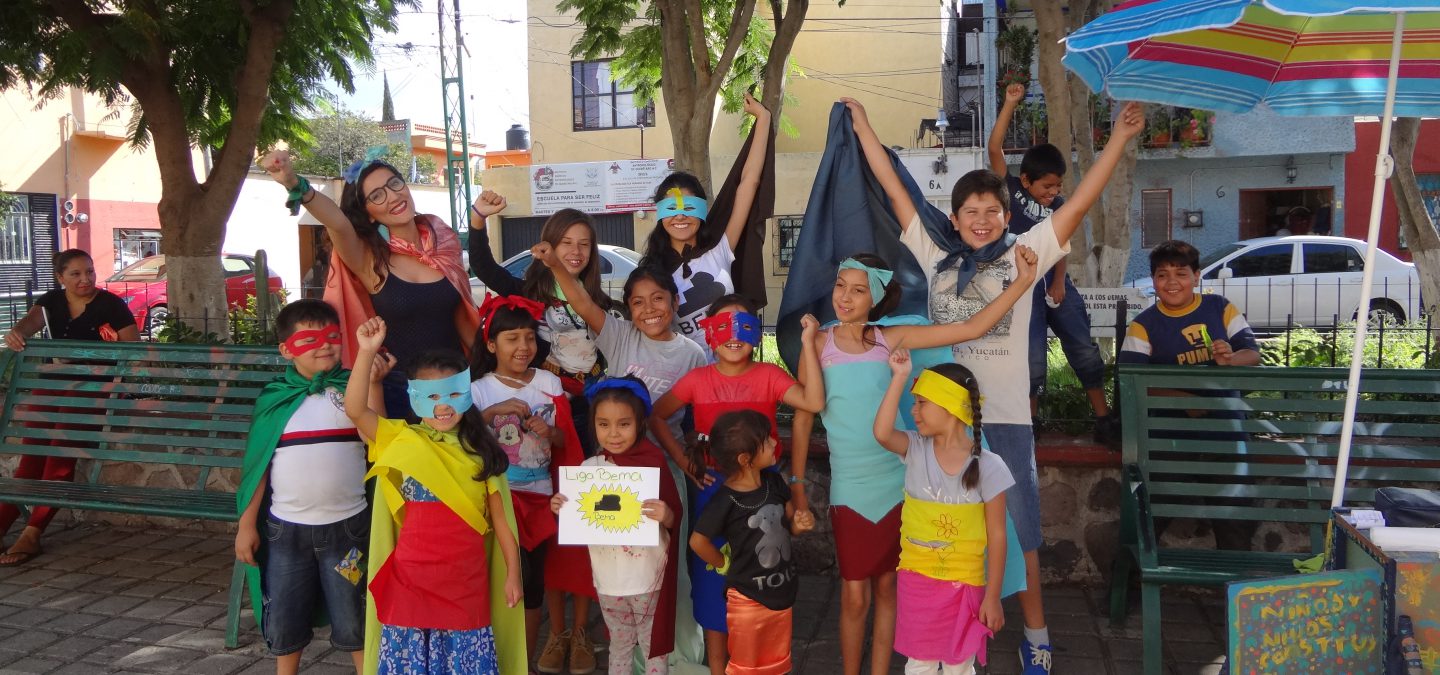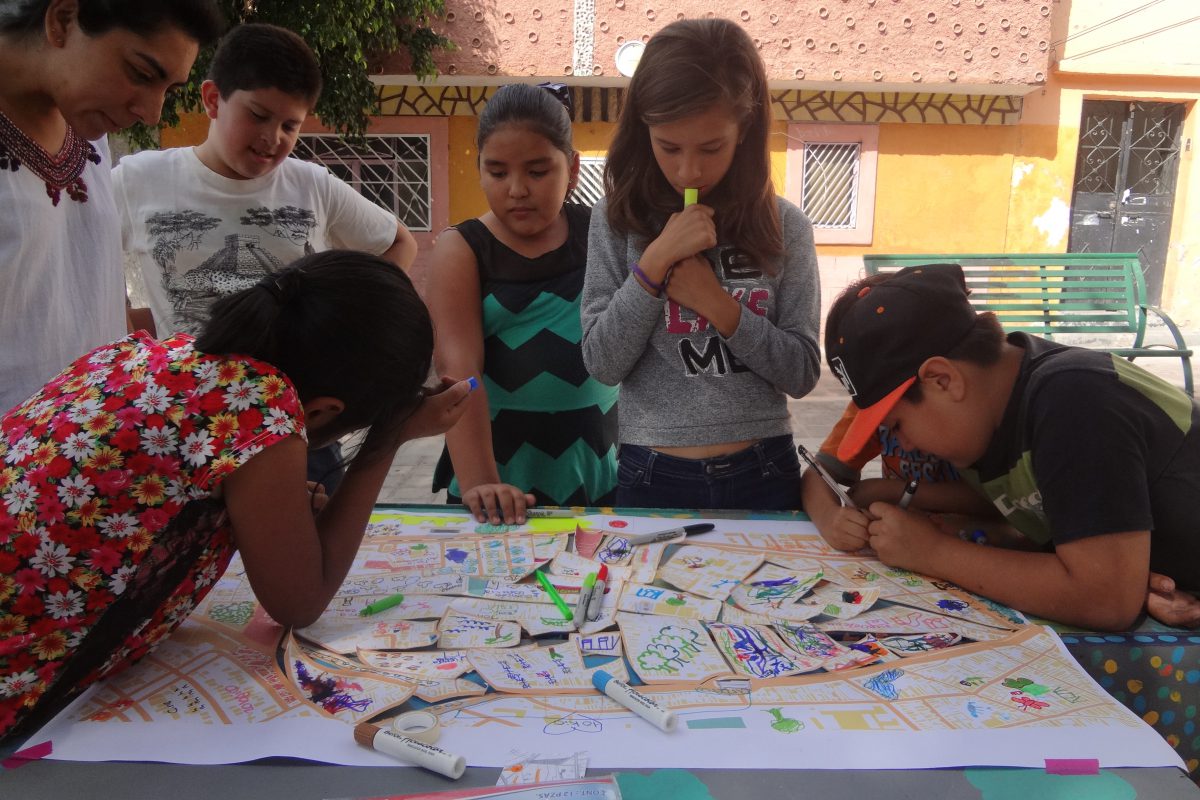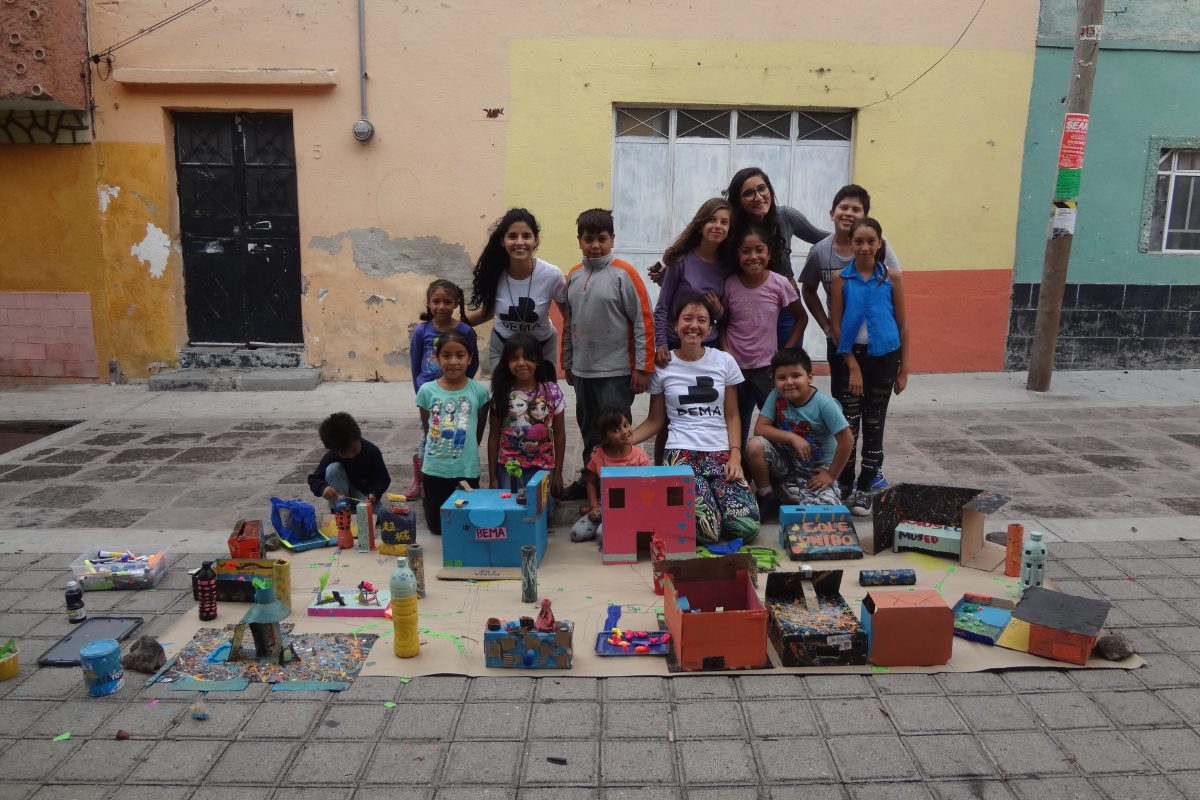
Keep up with our latest news and projects!

San Francisquito is an almost forgotten neighbourhood in the heart of Querétaro, Mexico; what was once one of the most iconic areas in historical downtown is now perceived as a dangerous hood for both insiders and outsiders. San Francisquito’s inhabitants have been mostly unconnected to the city despite living in the centre of it. Today San Francisquito is in the scope of urban transformation and land speculation making this the time to empower the neighbourhood, and mostly the kids, to understand, propose and define the city. For transformation to happen, kids need the tools to help them decide what cities could and should be in the future. After all, kids in the “barrio” spend most of their time by themselves walking, playing and learning from the city: they are the experts!
In 2017 we ran a summer course in a small square of San Francisquito, which was focused on kids aged between 3 and 12, in the hope of teaching and empowering them to become urbanists in their own neighbourhood, although throughout the various activities we learnt more from the children than them from us. The summer course was mostly held in the public park utilising a small cart that was personalised by the kids and that contained all the materials needed for our activities. All of the participants arrived on foot, some of them accompanied by older siblings, parents and grandparents, and some who always came alone. In the first days, we did not have much of an audience, but as the days passed the word spread and we had up to 20 children.

Central to our process was empowering the children with trust. We trusted that they knew their neighbourhood, and we paid attention to their voices. Hence, our first activity consisted of a walking tour of their streets, in which children showed us the most important buildings, places and assets of San Francisquito, bringing us to their level and understanding what they found relevant.
From this, we found that routine and organisation was core to building trust, both with us and between each other. They had their own conflicts to resolve, and often this was in the streets because they had very little room for it in the confines of their own homes. We also acknowledged that these children spent more time than any other demographic, outside between the streets and the square. By extension, they knew their neighbourhood, the opening times of corner shops, and the characters of the neighbours. They hold so much knowledge of their lived environments that we rarely tap into.
We developed a working idea of the public with them; who is the public and how does the public occupy and use space? We carried out activities that allowed them to discuss the diversity of people and needs and to position themselves as the transformers of the space in which they live, as well as articulators of their own community. These activities ranged from putting “citizen fines” (to remind their neighbours to respect the maximum speed or not to park in forbidden places), to provide them with the knowledge and steps to request formal institutional change; in explaining the format of a letter to the local government, the children wrote out their requests, organised a petition, and went around knocking on their neighbours’ doors collecting signatures. With the understanding of these processes, the kids organised themselves, defining who did the door knocking, the talking and the writing. What they petitioned for was public rubbish bins, yet in their letters, they talked about the need for more friendship and street lighting, so that their streets were safer.

The autonomy and creativity that many children have in San Francisquito is something that we wanted to nurture; a lack of playground facilities does not equate to a lack of play, what is at the eye level for many children is its potential for it – a tree, a bench, a lamppost; and also the obstacles – cars, blank walls, and the exhausts of big buses and trucks. If we take the stance that planning should take into consideration experience, behaviour and emotions, then these programmes are as much the kids teaching us what they know as it is us empowering them. For example, when the children designed their own ideal park, they included benches for their grandmothers and wifi for their parents and older siblings. When they planned their desired neighbourhood, they argued about the future of San Francisquito: the location of the many public pools needed, the revitalisation of the dangerous areas and whether a department store should be installed on their streets.
Most of what we did during the programme “Niñas y Niños Urbanistas de San Francisquito” was about giving the kids a language framework from where to talk about public spaces, architecture, place improvement, urban functionality and to discuss why they are important to them. The kids knew most of the ideas discussed intuitively, our goal was to articulate them in a way so that kids could take action.

The city reimagined from a child’s perspective became increasingly clear to us, as something that exists both within their physical worlds as well as their imagined and emotional ones. For them, a city is both concrete and subjective, real and fantastic, harsh yet beautiful, local as well as global, and fuelled with emotion. Children experience the city at the eye level not just for what is seen, but in what the spaces promote and the culture they enable.
We are confident that cities must nurture kids’ autonomy because ultimately the city belongs to them. This is because cities are as much what a child can touch as it is what they believe; public spaces are empowering and liberating places for kids; children explain concrete ideas with fantasies in which they portray the reality; when kids plan they consider all those in their community and not just themselves. Ultimately, we learnt that kids think positively when approaching any urban problem, as the city is a great place to live.
We hope to host our programme again this year and to continue to embrace the city at kids’ eye level.

This article belongs to a series of stories about the city at eye level for kids! You can access the full book online in PDF or pre-order your hardcopy to be delivered to your home.
Get your book here